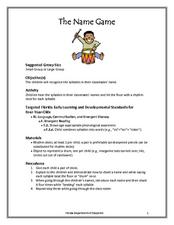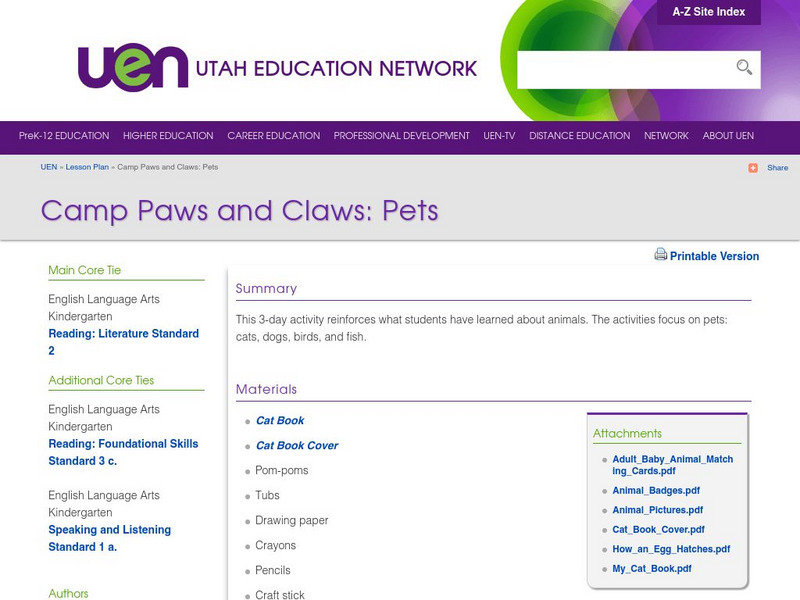Curated OER
Animal Adults and Babies
Students examine how different animals care for their young and how young animals change as they grow. They conduct research on the growth patterns and life cycle of a selected animal, create a realistic baby and adult form of their...
Curated OER
Animal Babies
In this matching animals instructional activity, students match the 9 animal babies in the right-hand column to the mother's names in the left-had column.
Curated OER
The Name Game
Students identify animals and their babies. In this animal name instructional activity, students come up with other animals whose babies have the same name. Students use the names of animals and their babies to write poems.
Curated OER
How Do Animal Life Cycles Vary?
In this animal life cycle worksheet, students will compare and contrast the life cycle of an alligator, insect, and bird. This worksheet is a graphic organizer.
Curated OER
Animal Babies
In this science worksheet, students are provided with a list of animals and the names used to refer to their young. Students can use this list for reference and/or matching each animal to its young counterpart.
Curated OER
Baby Animals
In this baby animals worksheet, students will color and cut out six adult animal cards and six baby animal. Then students will match the adult to the correct baby animal.
Curated OER
Animals and Animal Babies
Students examine how some animal young are similar to the adult. They look at pictures of various animals and their young and identify if they look similar or not similar to the adult animal, and draw a picture of a baby and parent...
Curated OER
Animal Identification and Matching
In this animal identification and matching worksheet, students name the 8 animals pictured, then match the animal with its baby by cutting and pasting or drawing lines.
Curated OER
How Are Offspring Like Their Parents?
In this parent and offspring worksheet, students complete a graphic organizer by writing in 1 idea and 2 supporting details about how offspring are like their parents.
Utah Education Network
Uen: Camp Paws and Claws: Pets
This multi-day series of lessons will engage students in reading and listenting comprehension strategies related to books about animals. Students will retell, dramatize, and illustrate their new animal knowledge.
Unite for Literacy
Unite for Literacy: Animals: Baby Animals
Can you name the babies of different animals? Includes audio narration in 18 additional languages with text in English.
University of Florida
Florida Museum of Natural History: Animals 1: Fur, Fins, Feathers, and More
This teacher's guide focuses on familiar animals such as mammals, birds, reptiles, amphibians, and fish.
E-learning for Kids
E Learning for Kids: Science: Rio De Janeiro: Animals and Their Babies
Join Emma and the children's carnival parade. Visit the zoo, and have a good look at the animals.
Monterey Bay Aquarium
Monterey Bay Aquarium: Sea Otters
A resource that explores the otter's life at sea with emphasis on keeping warm, diet, social life, and mother and pup. A live cam is set up to view the sea otters. Other sites (Marine Mammals and Octopus's) can be accessed.
Other
Mammals and Their Babies
Twelve mammal baby pictures are displayed in this resource. If you roll your mouse over a picture you can see the adult version of the same animal.
















